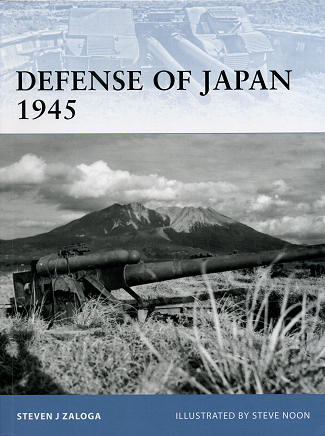 By
1944/45, it was pretty obvious to most of the leaders of Japan that there would
be an invasion of the home islands by the Allies. The war had been going against
them since late 1942, yet such was the mentality of the Japanese military, that
no effort at all was made into building defensive fortifications at home.
Japan's military had always looked to the offensive and so the art of defenses
were somewhat foreign to them. Yet they were faced with being on the defensive.
By
1944/45, it was pretty obvious to most of the leaders of Japan that there would
be an invasion of the home islands by the Allies. The war had been going against
them since late 1942, yet such was the mentality of the Japanese military, that
no effort at all was made into building defensive fortifications at home.
Japan's military had always looked to the offensive and so the art of defenses
were somewhat foreign to them. Yet they were faced with being on the defensive.
Over the years of war, something had been learned about
what worked and what did not. Japan had men in Europe during the build up of
Germany's defensive systems, and some of that information has been brought back.
However, Japan did not have the infrastructure set up to build the massive
concrete structures that were so common with German defensive sites.
Instead, the Japanese decided to use natural features
such as caves to house some of their defensive features. In other cases, they
chose to use camouflage to hide thinks like gun emplacements. To be certain,
some concrete structures were developed to house the Emperor and some important
military operating centers, but this was a rarity.
For defensive weapons, Japan was yet again a bit behind.
The Japanese continued to use anything that could be considered useful, despite
its age so many of the defensive guns were from the turn of the century. Old,
but still capable of being used. In addition to guns, the Japanese built
concrete structures to house aircraft of various types and used caves to hide
things like suicide boats and Ohka rocket powered human-flown bombs. Even small
submarines and suicide aircraft were part of the homeland defenses. To be sure,
any invading army was not going to take the ground without considerable human
cost on both sides.
Author Steven J Zaloga covers all of this as he takes a
look at the various structures, where they were placed and how it was planned on
using them during an invasion. As most of these structures are now gone, we rely
on the superb photos taken immediately post-war and on the excellent art work of
illustrator Steve Noone to give us an idea of how these defenses looked.
It is an excellent book that should be on the shelves of
anyone interested in the Pacific War in general and what the Allies could have
faced during an invasion of the Japanese home islands. Highly recommended.
October 2010
For more on the complete line of Osprey books,
visit www.ospreypublishing.com. In the US, it is
Osprey Direct at 44-02 23rd St, Suite 219, Long Island City, NY 11101., where you can
get a catalogue of available books.
If you would like your product reviewed fairly and quickly, please
contact
me or see other details in the Note to
Contributors.
 By
1944/45, it was pretty obvious to most of the leaders of Japan that there would
be an invasion of the home islands by the Allies. The war had been going against
them since late 1942, yet such was the mentality of the Japanese military, that
no effort at all was made into building defensive fortifications at home.
Japan's military had always looked to the offensive and so the art of defenses
were somewhat foreign to them. Yet they were faced with being on the defensive.
By
1944/45, it was pretty obvious to most of the leaders of Japan that there would
be an invasion of the home islands by the Allies. The war had been going against
them since late 1942, yet such was the mentality of the Japanese military, that
no effort at all was made into building defensive fortifications at home.
Japan's military had always looked to the offensive and so the art of defenses
were somewhat foreign to them. Yet they were faced with being on the defensive.